This newsletter is written on August 20, 2024. Fall officially begins September 22.
For the past week, as I’ve been wandering the garden on Morning Patrol, I’ve noticed many of my autumn bloomers getting ready to take the stage and start adding color to the garden. Some of the plants bloom late August to September, so they are right on time, even though I may not be emotionally ready for them. (I’m still traumatized by 100-degree days this season).
I wrote about the seasonality of the garden in a newsletter dated June 7, 2024, called “Looking at the Garden Through Seasonal Glasses.” Back then I highlighted some spring bloomers and listed the summer plants that were due to bloom next. Here’s a quick review of plants in my garden by season that might be helpful. (For those of you who get confused by the plant names, this won’t be helpful at all. You might want to skim through this part.) Here’s a list of the perennials in the garden, not including ones I forgot, sorted by season, with the caveat that some of these plants bloom across multiple seasons.
Spring:
Lenten Rose, Jack Frost Brunnera, Bleeding Heart, Golden Star, Yellow Epimedium, Bluestar Amsonia, Solomon’s Seal, Blue Zinger Sedge, Foxglove, Lungwort, Lamb’s Ear, Astilbe, Daffodil, Iris, Lamium/Deadnettle
Summer:
Japanese Painted Fern, Japanese Forest Grass, Ostrich Fern, Coral Bells, Blue Veronica, Rozanne Geranium, Millennium Allium, Hosta, Plumbago, Daylilies, Yarrow, Moonbeam Coreopsis, Russian Sage, Black-Eyed Susan, Coneflower, Dwarf Pampas Grass, Hardy Begonia
Autumn:
Variegated Liriope, Windflower (anemone), Hot Lips Turtlehead, Adagio Maiden Grass, Autumn Joy Sedum
As I wrote in June, the trick is to have plants that bloom in each season so that you always have color in your garden. In a shade garden, you rely on plant foliage to supply color year-round, and goodness knows I have enough shade in my backyard. Before I get sidetracked whining about having too much shade in my backyard (again), let’s get back to focusing on our fall bloomers, namely anemone, turtlehead, maiden grass, and Autumn Joy sedum.
For me, Hot Lips turtlehead is a stunning plant that is nothing but spectacular. It is an August bloomer, and in a recent newsletter I applauded the appearance of the first flower to courageously make an appearance this year. Last year, the plant won the coveted Ken Solow Plant of the Year Award, but this year, due to deer eating the buds off three of the four plants, I thought Hot Lips turtlehead was out of the running. Boy was I wrong. Take a look at the one plant the deer didn’t get to this summer. Because it’s located along the wall that borders the waterfall --a centerpiece of the garden -- you can’t help but be mesmerized by the flower display. I’m guessing turtlehead is going to get nominated again this year.
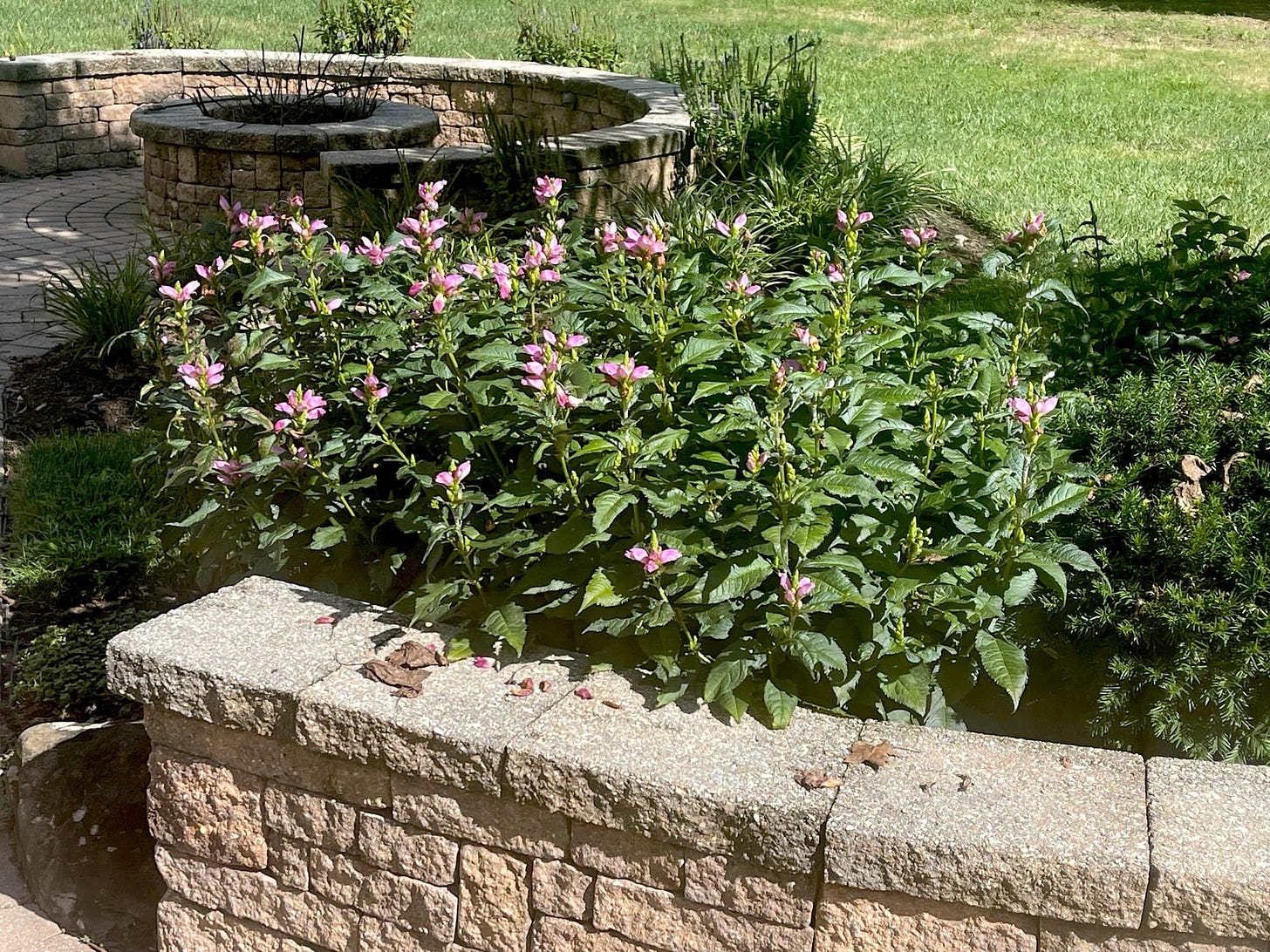
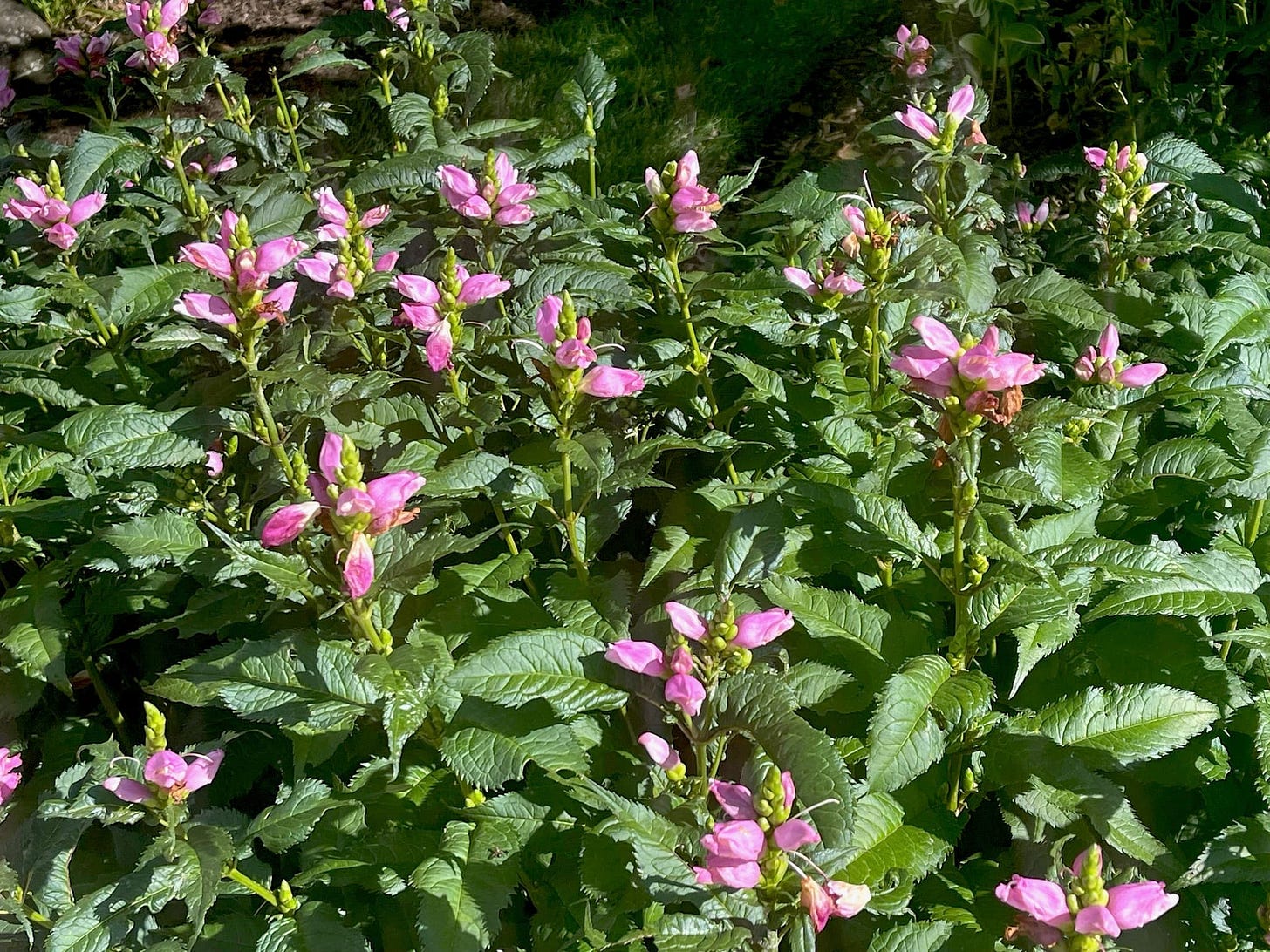
Another sign that autumn is on the way is to inspect the red colors beginning to infuse the plumbago in the back bed. Last year the plumbago offered a nice site for a snapping turtle looking to build its nest, and it didn’t work out well for the plumbago (or for the turtle, who was evicted from the bed by an overexcited and disbelieving gardener). This year the plumbago plants in the back bed have flourished, and I notice that the leaves are unexpectantly turning a vibrant shade of red. A little quick research reveals that, yes, plumbago turns red in the fall. I guess I missed it last year. Another signal from the garden that fall is on the way.
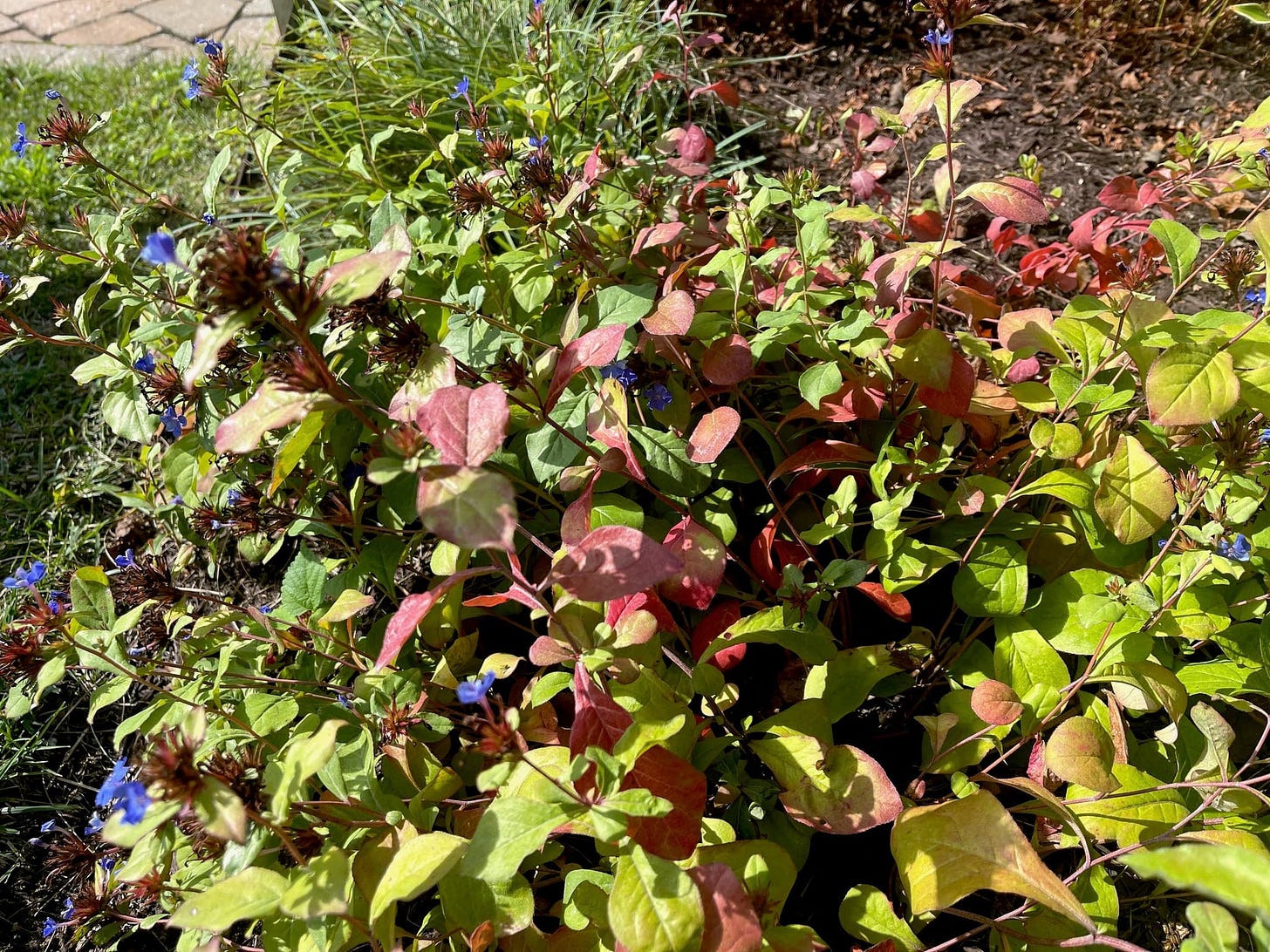
I bought two different ornamental grasses for the sun bed this year, mostly to add some height to one side of the bed to balance the height of the bird feeder and the Russian sage in the center and left side of the bed, respectively. I installed dwarf pampas grass and dwarf maiden grass in early June, but the pampas grass didn’t bloom as scheduled this summer. However, the maiden grass, which is supposed to be a late summer/fall bloomer, has suprised me by throwing up some gold-colored, wispy seed pods in the past few weeks, creating new interest in the sun bed. Hopefully I’ll get to see both plants bloom next year.
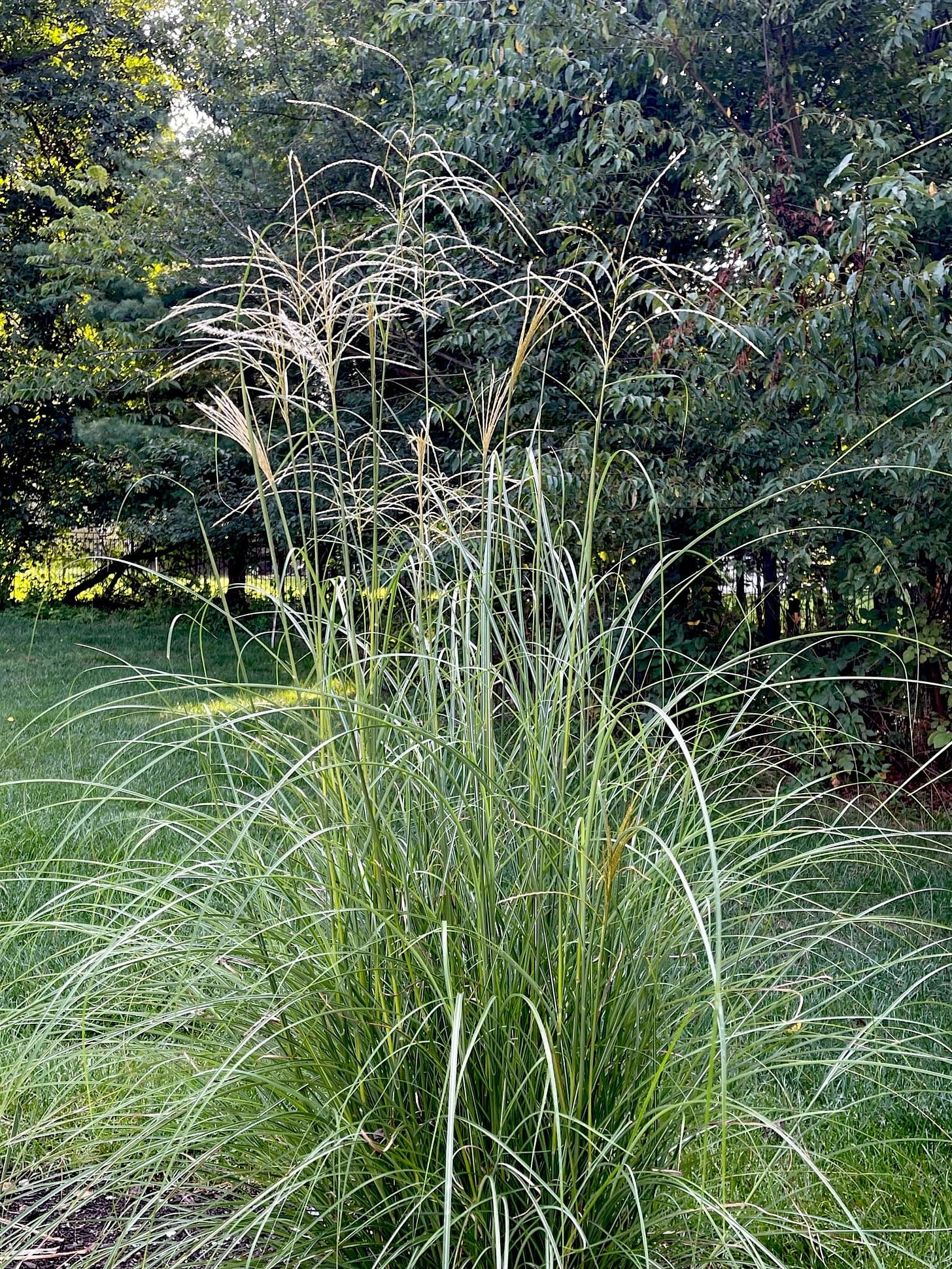
One of the hottest stars of the autumn flower show in the garden is the anemone, or windflower, in the astilbe bed. The plants are aptly named because the buds come shooting out of the basal foliage in August and tease you for several weeks before blooming in late August and September. The flowers sway in the breeze and the delicate, white petals look amazing as they hover above the rest of the bed. We installed four plants in the bed three seasons ago. For the first time all four plants are putting on a show, throwing buds high in the air. I took a photo of the plant this morning to celebrate the first windflower of the season. I want to thank that flower for its courage in being first, showing the way for the other buds to join the party this fall.

Lastly, it’s worth highlighting the one plant named for its season, Autumn Joy sedum. I have four Autumn Joy sedums planted in the firepit bed, where they coexist with summer bloomers like blue Veronica and daylilies. Two of the plants are transplants from the sun bed, where they were devasted by birds last season. This year, all four of the plants were eaten by deer and I didn’t think they would bloom this year. I was wrong. The two plants on the side of the bed that get afternoon sun this late in the summer are full of buds and are waiting until September to turn a brilliant red. Unfortunately, the other two plants are not doing as well. This is a story where once again I need to commit to spraying regularly in hopes of keeping the deer off the plants long enough for them to mature. When the Autumn Joy sedum burst into bright red color, you know fall has arrived.
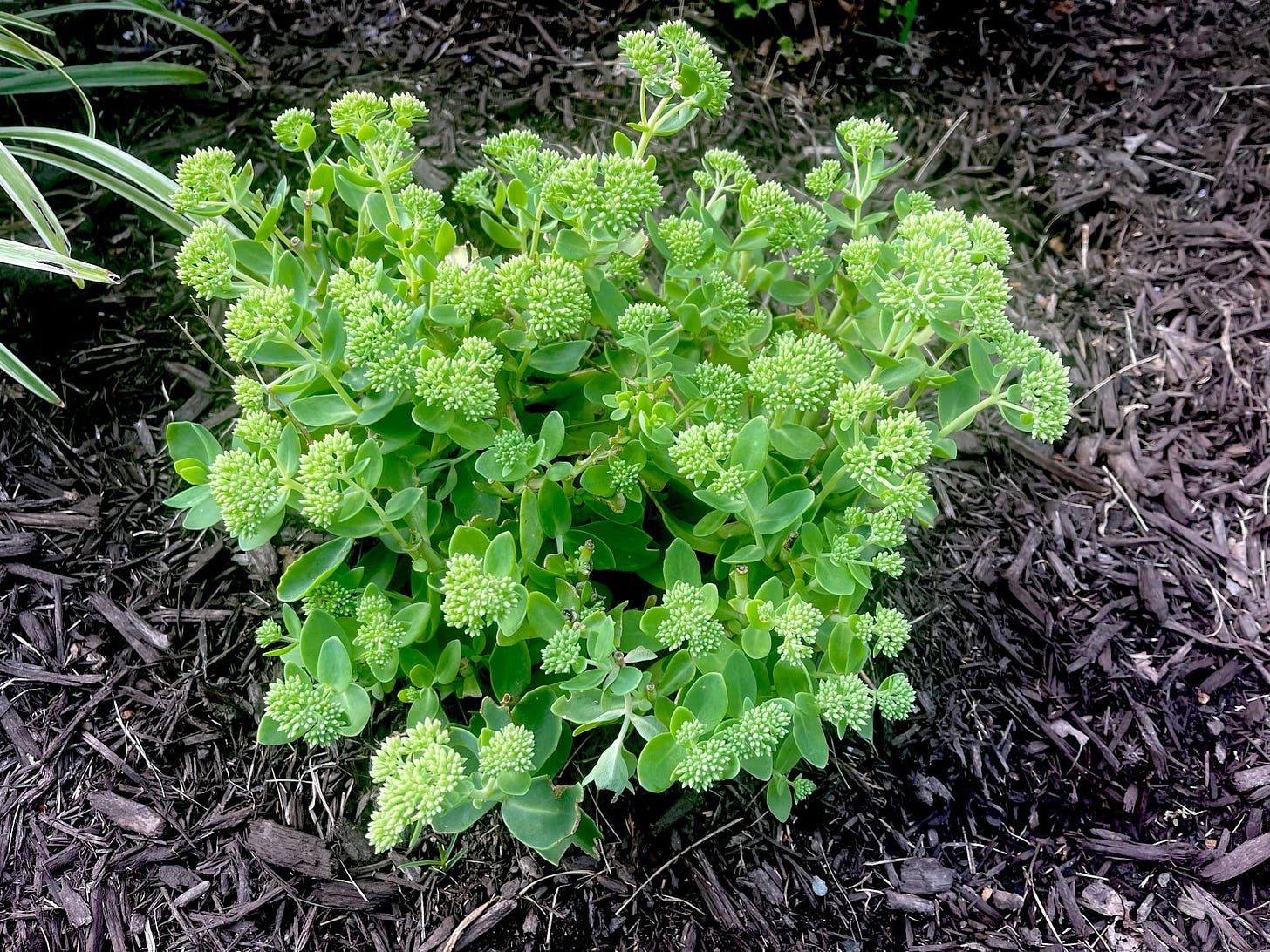
It’s been 60-some degrees early in the morning this week, and the highs are in the mid-70s with low humidity. Maybe it isn’t so hard to believe that fall is right around the corner. (Just by writing this newsletter I’ve probably jinxed it, and we’ll have the hottest September on record. Let’s hope not.)
That wraps it up for this week’s newsletter. I hope you are enjoying The Painful Education of a Type A Gardener. If so, I hope you will share it with someone you know. The cost is the same … free. Also, at no cost you can find all the previous content for the newsletter in the archives. Help yourself. And please know how much I appreciate your “likes” and comments.





Hi Ken, I sent this from my personal email account. I usually respond through my John Cannon Homes account. Your weekly newsletter is great! Best, Don